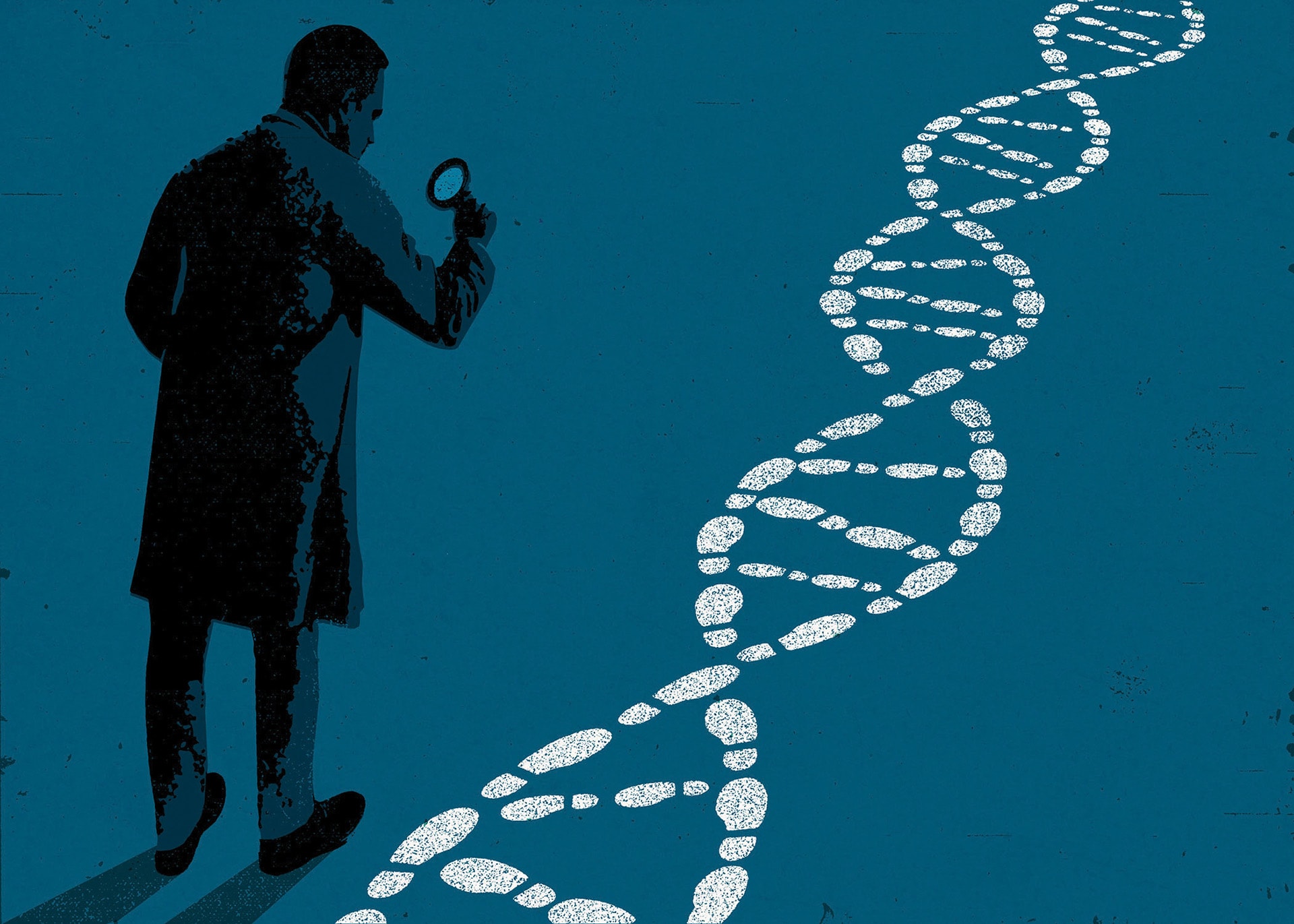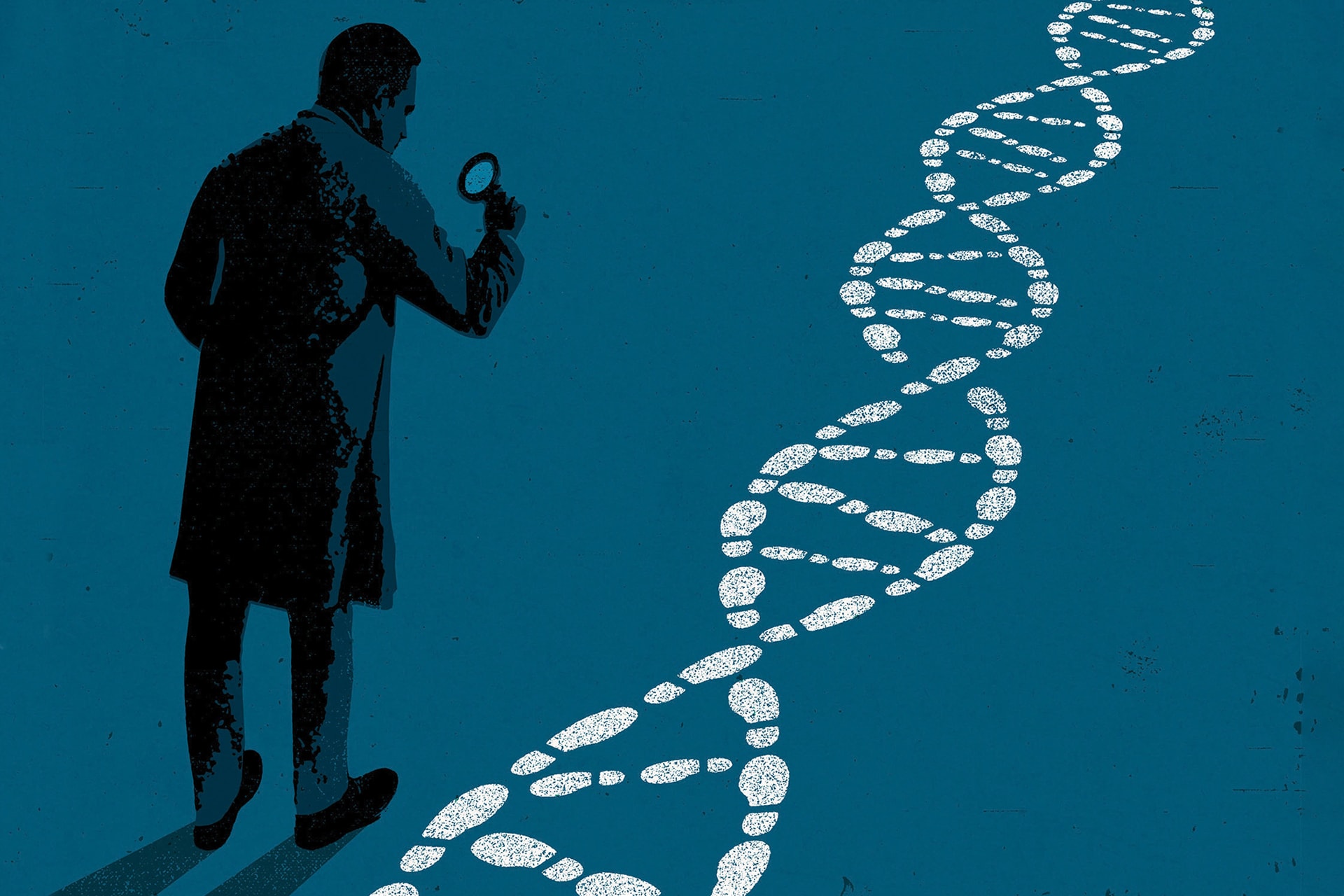Disease
Detectives
The Miller School’s diagnostic sleuths use state-of-theart genetic tools to identify rare ailments
By Josh Baxt
Illustration by Richard Mia
When it comes to medical care, patients have a general expectation that their physicians will take a medical history and run some tests, which will more or less identify the problem, and a care plan will soon follow.
But some conditions, particularly rare ones, defy analysis. Many diseases have entirely different root causes but share symptoms, making it difficult to tell them apart. Old-school genetic diagnostics only test a few genes at a time, and their findings can take weeks to come back. If the results are negative, new tests are ordered, and the cycle repeats.
This process can go on for months or even years, as patients and families enter a diagnostic no man’s land. Without definitive answers, any attempt to treat the condition — whatever it might be — is based largely on guesswork.
“These are the rarest of rare diseases,” said researcher Mustafa Tekin, M.D., a professor in the Miller School of Medicine’s Dr. John T. Macdonald Foundation Department of Human Genetics. “They often produce unusual symptoms and [there is] little to no medical knowledge or explanation to provide an accurate diagnosis.”
But new technologies are dramatically improving our ability to understand and treat mystery diseases. Advanced approaches are providing tools to deliver timely diagnoses. Next-generation genomic sequencing can examine all of a patient’s 20,000 genes or an entire genome, which contains both the genes and the noncoding sequences of the patient’s DNA, to find disease-driving mutations. This ability to pinpoint a genomic root cause is helping rare-disease patients find effective treatments.
“We are increasingly optimistic about being able to provide treatments for many patients with rare diseases.”
— Stephan Züchner, M.D., Ph.D.
For more than a decade, investigators from the John P. Hussman Institute for Human Genomics and the Dr. John T. Macdonald Foundation Department of Human Genetics have searched for molecular and other markers that can identify a patient’s disease and possibly point to treatments. In some cases, however, a condition is so rare there isn’t even a name for it.
One such case involves a girl, now 9, who has been plagued with health problems since birth. At 17 days, she underwent heart surgery. Genomic sequencing found a mutation in a gene called ACTA2, which is critical to smooth muscles. Her condition was ultimately named systemic smooth muscle dysfunction syndrome.
This minor variation in one gene has caused widespread problems in her eyes, brain, bladder and lungs. But once Dr. Tekin and his team found the genetic cause, they could prescribe the appropriate therapies to manage her condition.
Miller School researchers and clinicians have helped a number of patients and families understand mystery diseases. An 11-year-old girl who was losing both sight and hearing was found to have mutations in two important genes. Another effort identified common mutations in four children who were developmentally delayed.
These scenarios come up more often than people realize. By definition, a rare disease affects fewer than 200,000 people, but there are more than 7,000 of these conditions. Around 30 million Americans suffer from some type of rare disease.
Unfortunately, diagnosis does not always lead to effective treatments. Quite often, there are no available therapies for conditions that might affect only a few dozen people. Still, for patients and families, simply identifying the problem can provide an emotional boost.
“In medical genetics, what we deal with are always rare diseases and often unknown diseases,” Dr. Tekin said. “Some are super rare, and some we don’t even know about yet. We’ve taken on about 200 cases and solved our share of mysteries.”
What began as a local effort is now national in scope. In September 2018, after nearly a decade of helping rare disease patients in South Florida, the Miller School program was invited to join the prestigious National Institutes of Health’s Undiagnosed Disease Network, or UDN. Other members include Harvard Medical School, the Center for Undiagnosed Diseases at Stanford University, Children’s Hospital of Philadelphia, and Baylor School of Medicine.

The UDN seeks to leverage this collective intellectual and technological prowess. As a clinical site, the Miller School will combine comprehensive examinations with genomic sequencing and other tools to help diagnose patients’ ailments.
The program is open to both adults and children, and performs a wide variety of tests to figure out a condition’s exact causes. Some UDN facilities assess patients’ transcriptomes — the collection of messenger RNAs their genes express. Others will study the metabolome, the molecules created by cellular metabolic processes. These and other advanced assays can provide important clues. A transcriptome analysis can determine if RNAs are forming properly. Metabolomics can identify molecular disease markers.
In some cases, researchers re-create a patient’s mutations in model organisms, such as roundworms or fruit flies, giving them an unparalleled ability to study the exact effect a mutation has on certain cells, track the disease’s natural progression and even test therapies.
“There’s a big emphasis on deep phenotyping — observing how these molecular changes are manifested in a patient’s body,” Dr. Tekin said. “We collect genomic samples, metabolomic samples and many other pieces to come up with a diagnosis.”
UDN members also consult at periodic meetings and via frequent teleconferences. There, they put all this information together to try to diagnose the condition affecting each patient and determine clinical responses.
The UDN taps into the Miller School’s deep bench of genetic and clinical experts. Stephan Züchner, M.D., Ph.D., who chairs the Dr. John T. Macdonald Foundation Department of Human Genetics and codirects the John P. Hussman Institute for Human Genomics, joins Dr. Tekin as colead for the Miller School’s UDN site.
“Being part of UDN is a big milestone for the already exceptional and internationally acknowledged rare-disease genetic programs at the Miller School,” Dr. Züchner said. “Finding the precise causes of disease paves the way for new treatments, especially gene therapy approaches, and we are increasingly optimistic about being able to provide treatments for many patients with rare diseases in the foreseeable future.”![]()



